Begonia chloroneura, a captivating plant that hails from the begonia family, is renowned for its unique features and striking beauty. This article delves into the intricate details of Begonia chloroneura, providing a comprehensive guide for enthusiasts and green thumbs alike.
Introduction to Begonia Chloroneura
Begonia chloroneura, commonly known as the “Green-Nerved Begonia,” is an exquisite species celebrated for its ornamental foliage. Belonging to the Begoniaceae family, this perennial plant has become a favorite among gardening enthusiasts due to its captivating visual appeal.
Origin and Distribution
Originating from the tropical regions of Asia, specifically found in countries like Malaysia and Indonesia, Begonia chloroneura thrives in the warm and humid climates characteristic of its native habitat. The plant has successfully adapted to various environments, making it a versatile choice for indoor and outdoor cultivation.
Key Features
- Foliage: The most distinctive feature of Begonia chloroneura lies in its asymmetrical leaves, adorned with vibrant green hues and intricate patterns. The leaves showcase a unique vein structure, enhancing the overall aesthetic.
- Size and Growth: Typically growing to a moderate height, Begonia chloroneura maintains a compact size, making it suitable for both small and large garden spaces. Its growth habit is bushy and well-branched, creating a lush appearance.
- Flowers: While the primary allure of this begonia is its foliage, it also produces delicate flowers. The blossoms, often appearing in clusters, add a subtle touch of charm to the plant.
Genus Species
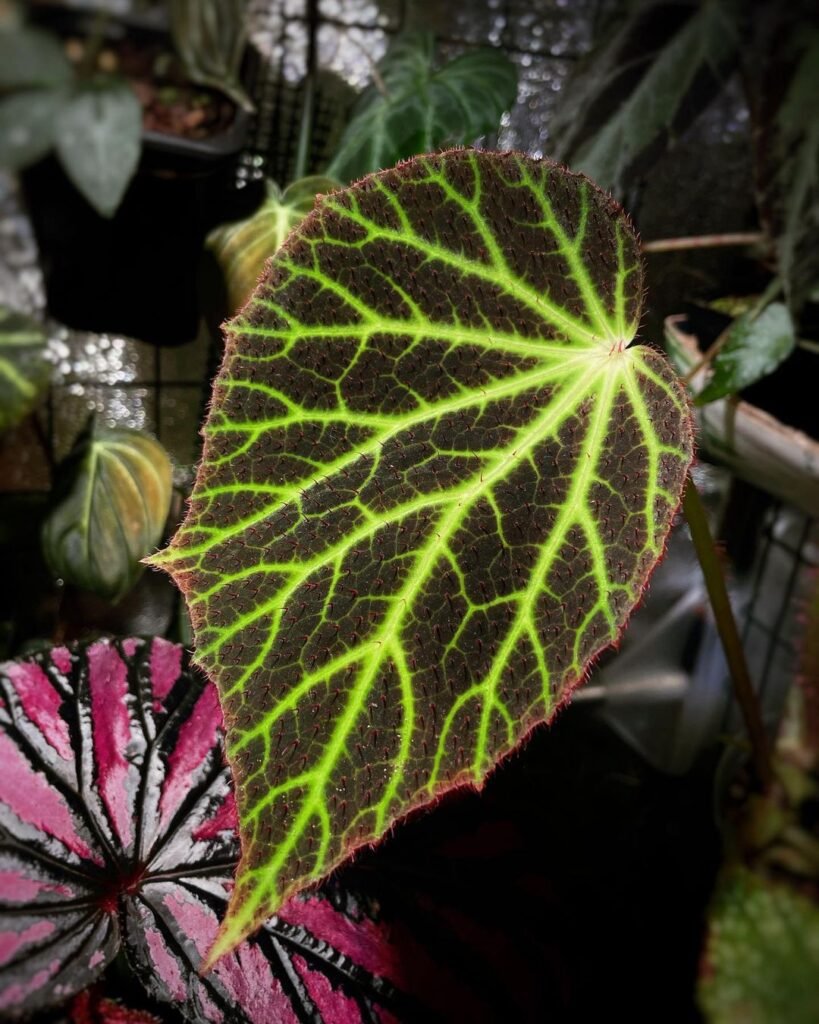
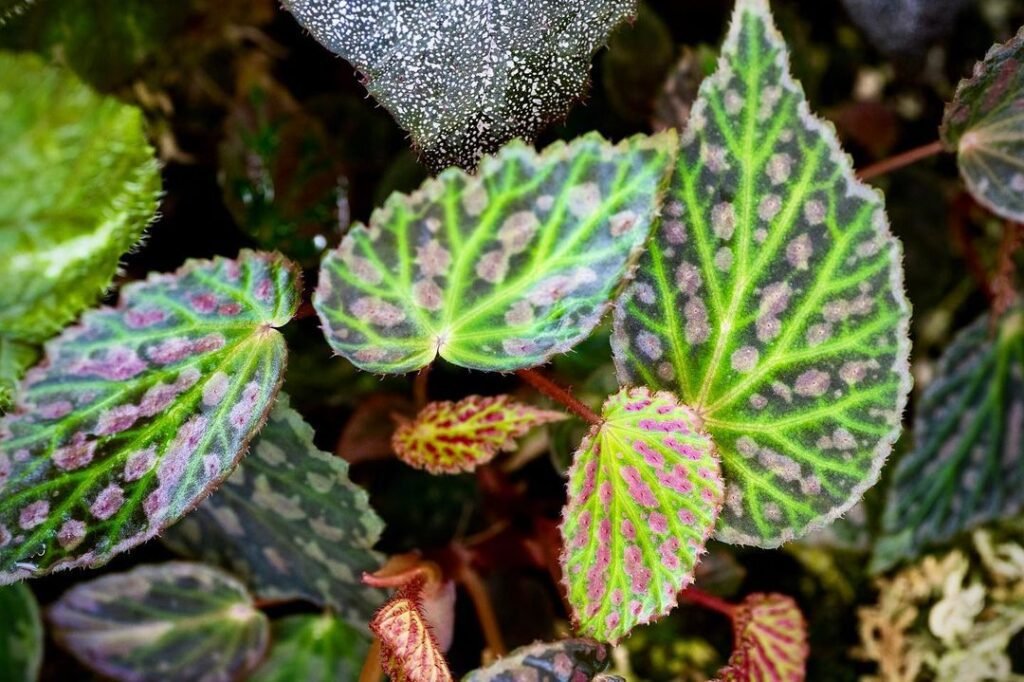
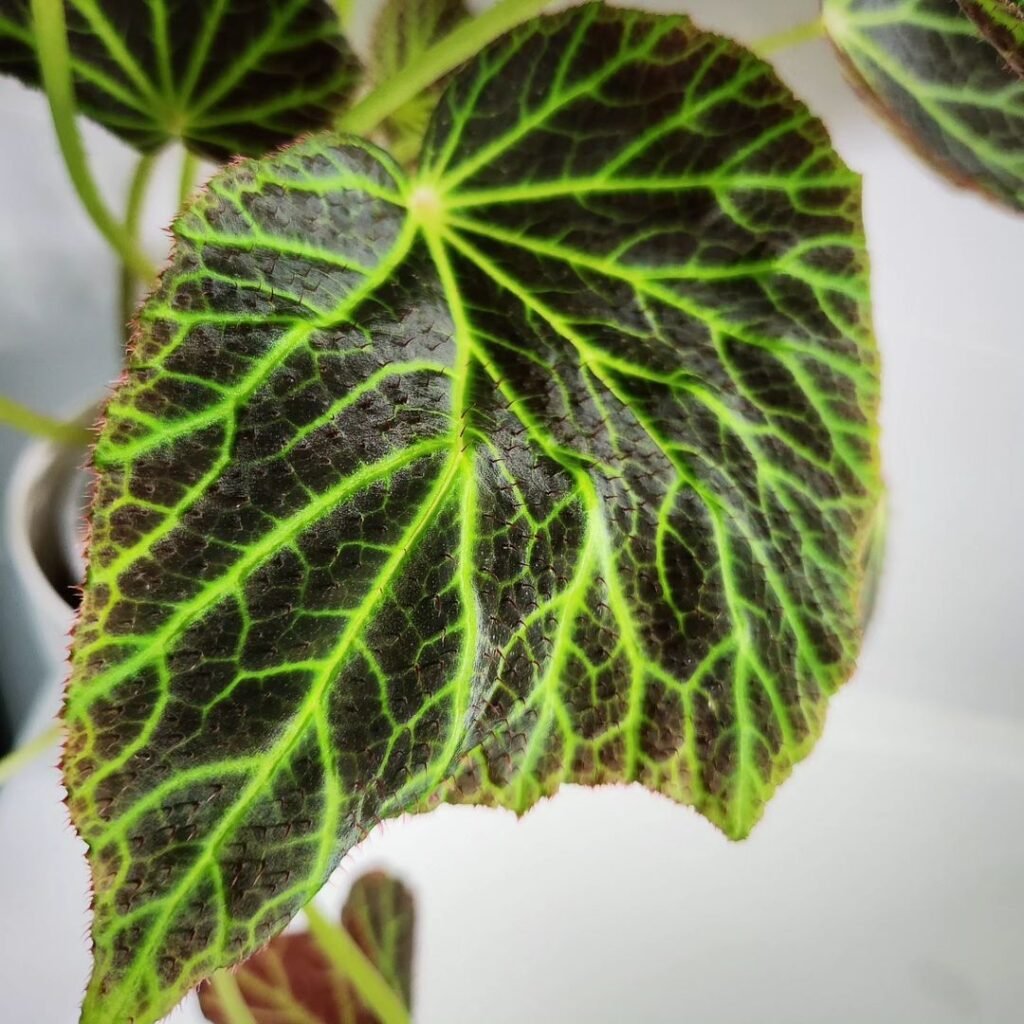
Understanding the Begonia Genus
Begonia chloroneura belongs to the vast and diverse Begonia genus, which encompasses a wide array of species with varying characteristics. The genus Begonia is one of the largest flowering plant genera, boasting over 1,800 known species.
Classification
- Family: Begoniaceae
- Genus: Begonia
- Species: Chloroneura
Diversity within the Begonia Genus
The Begonia genus is known for its incredible diversity, ranging from rhizomatous and tuberous begonias to those with cane-like stems. Each species within the genus possesses unique attributes, contributing to the overall richness of the begonia family.
Common Traits of Begonias
- Foliage: Many begonias, including Begonia chloroneura, are celebrated for their decorative foliage, which comes in various shapes, sizes, and colors.
- Flowers: While not all begonias produce showy flowers, those that do exhibit a remarkable range of colors and forms, making them popular choices for gardeners seeking vibrant blooms.
Begonia Chloroneura Appearance

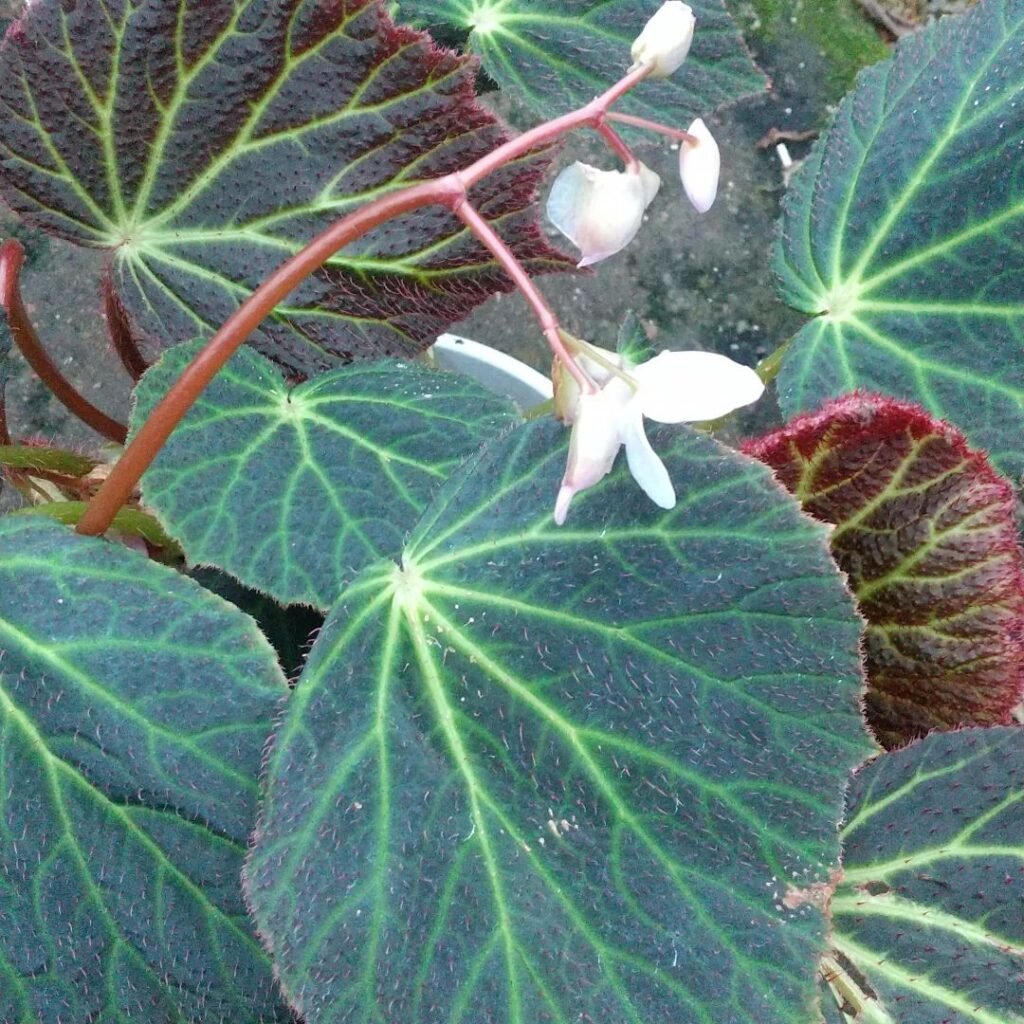
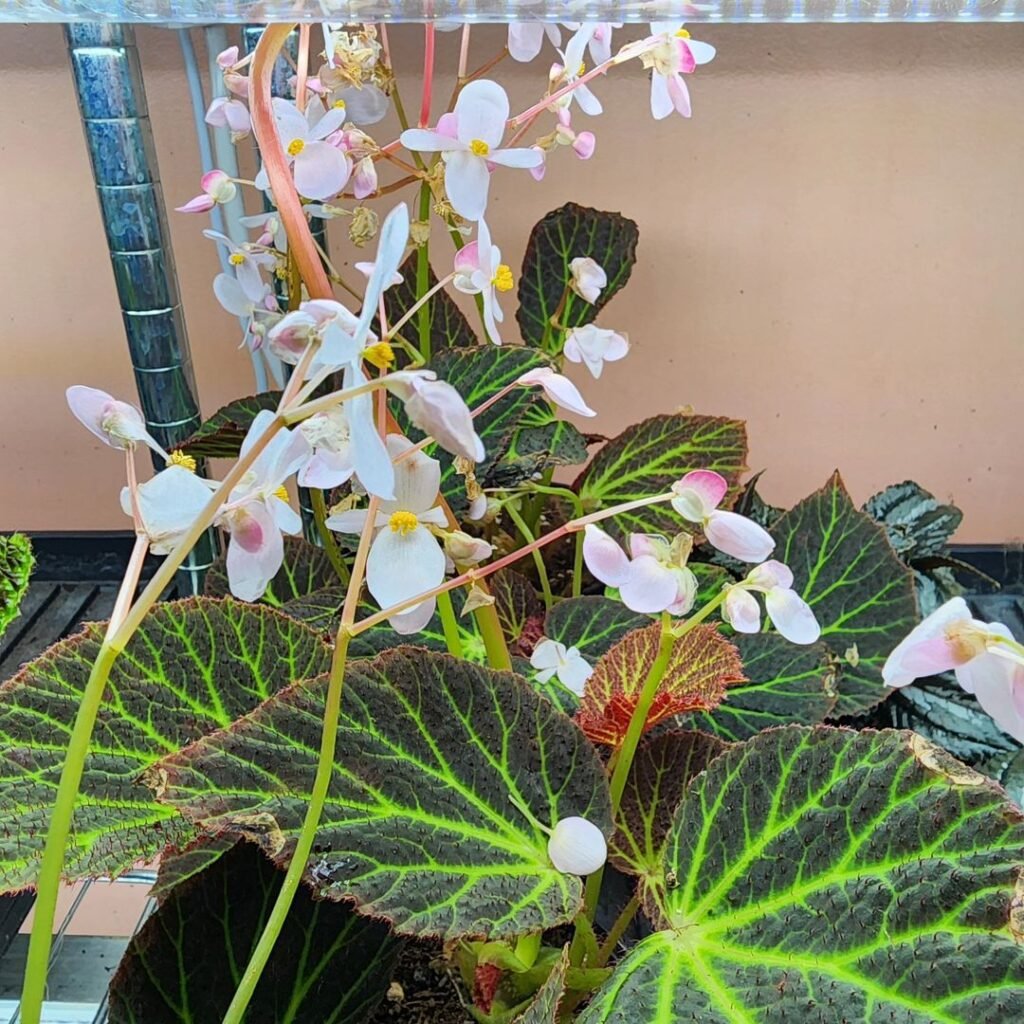
Foliage Characteristics
Begonia chloroneura’s visual appeal primarily stems from its distinct foliage. The leaves are asymmetrical, showcasing an elegant combination of green shades with intricate vein patterns. The leaf edges may feature subtle serrations, adding to the overall texture.
Growth Habit
This begonia adopts a bushy growth habit, with well-branched stems creating a dense and lush appearance. The plant’s size remains moderate, making it suitable for various settings, including containers, hanging baskets, and garden beds.
Flowers and Inflorescence
While the primary focus is on its foliage, Begonia chloroneura does produce small, delicate flowers. These blooms are typically arranged in clusters, adding a charming touch to the overall aesthetic. The flowers, though not the main attraction, contribute to the plant’s overall appeal.
To better understand the distinct features of Begonia chloroneura, refer to the following table highlighting its key characteristics:
| Feature | Description |
|---|---|
| Leaf Color | Vibrant shades of green with intricate vein patterns |
| Growth Habit | Bushy and well-branched, creating a lush and dense appearance |
| Flower Appearance | Small, delicate flowers arranged in clusters |
| Size | Moderate, making it suitable for various garden settings |
Not the plant for you? Check out my full list of 78 Types of Begonia!
Begonia Chloroneura Care Tips
Quick Overview
Begonia chloroneura care revolves around providing the right conditions for its growth, ensuring a vibrant and healthy specimen. Here are some key care tips:
| Care Aspect | Tips and Tricks |
|---|---|
| Light | Provide filtered or indirect sunlight; protect from harsh sun |
| Soil | Use well-draining, organic-rich soil |
| Watering | Keep soil consistently moist; allow top inch to dry between waterings |
| Humidity | Maintain high humidity through misting or humidifier |
| Temperature | Keep within the range of 65-75°F (18-24°C) |
| Fertilizing | Apply balanced liquid fertilizer every 2-4 weeks during the growing season |
| Pruning | Trim leggy or damaged stems to maintain a compact shape |
| Propagation | Propagate through stem cuttings in spring or early summer |
| Repotting | Repot when the plant outgrows its container or every 1-2 years |
This table serves as a handy reference for enthusiasts looking to provide optimal care for their Begonia chloroneura, ensuring a thriving and visually stunning plant.
Begonia Chloroneura Light and Soil Requirements
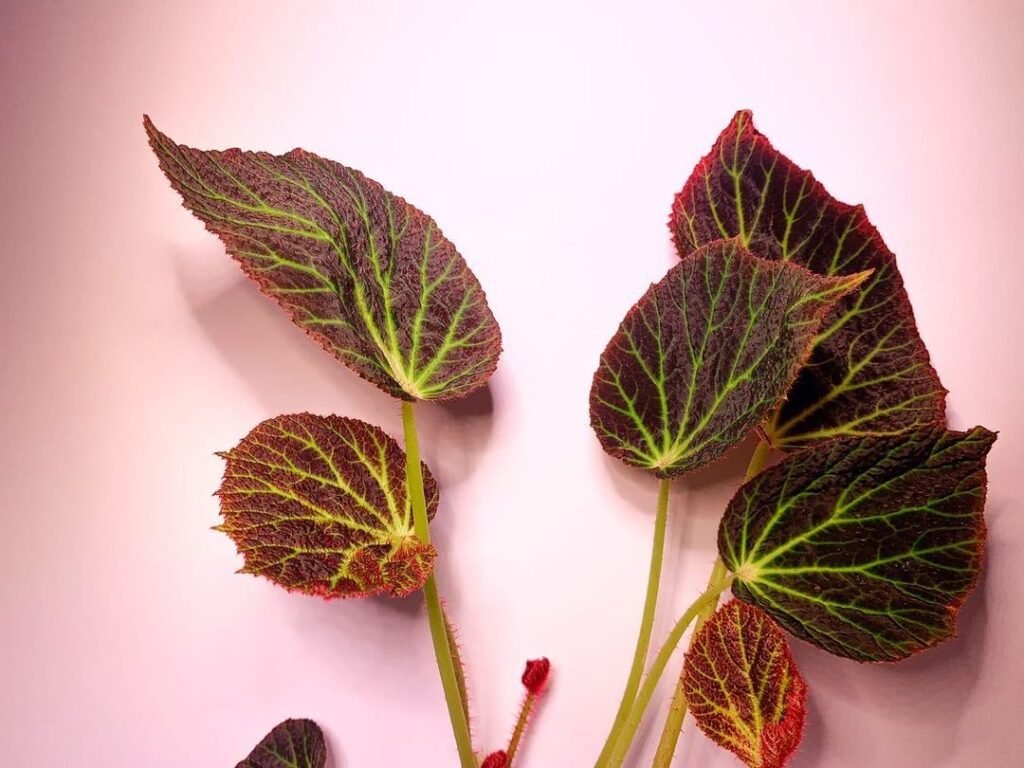
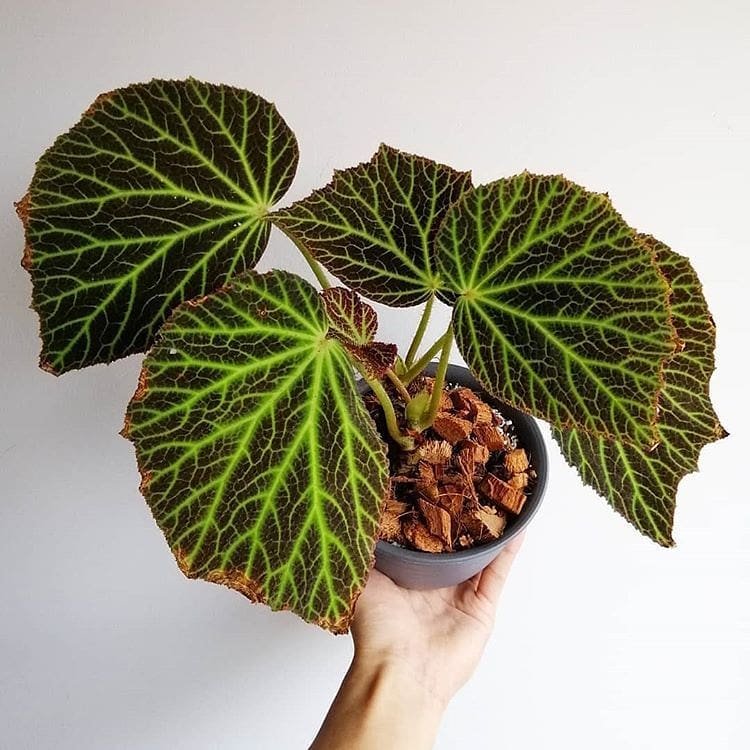
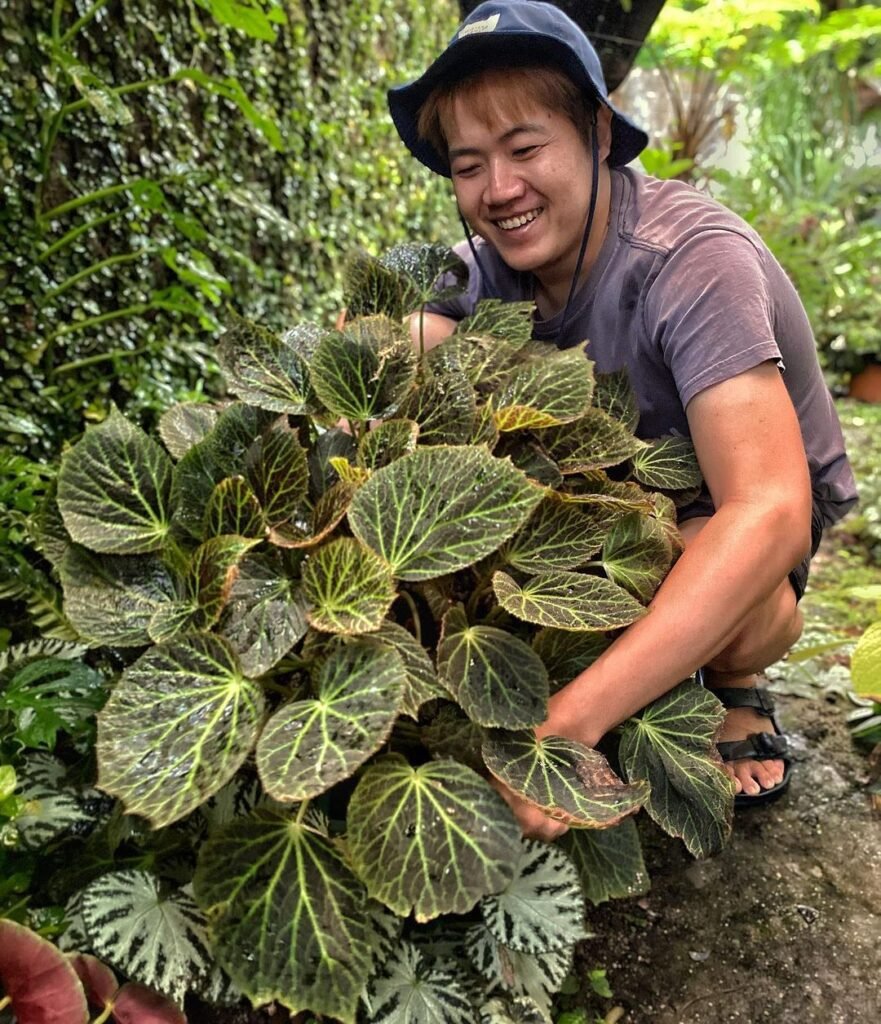
Light Requirements
Begonia chloroneura thrives in filtered or indirect sunlight, making it well-suited for indoor environments. While it appreciates bright conditions, prolonged exposure to harsh, direct sunlight should be avoided. Placing the plant near a window with sheer curtains or providing dappled sunlight outdoors creates an ideal light environment.
Soil Requirements
The soil for Begonia chloroneura should be well-draining and rich in organic matter. A high-quality potting mix with added perlite or sand promotes optimal drainage, preventing waterlogging that could lead to root rot. Ensuring the soil retains moisture without becoming overly saturated is crucial for the plant’s health.
Container Considerations
When cultivating Begonia chloroneura indoors, choosing a container with drainage holes is essential. This facilitates proper water drainage and prevents the soil from becoming waterlogged. Additionally, using a container that allows for sufficient root space and promotes airflow contributes to a healthy root system.
Outdoor Planting
For outdoor cultivation, plant Begonia chloroneura in garden beds with well-amended soil. Adding organic matter, such as compost, enhances soil fertility and moisture retention. Mulching around the base of the plant helps regulate soil temperature and conserves moisture, contributing to overall plant health.
Watering Begonia Chloroneura
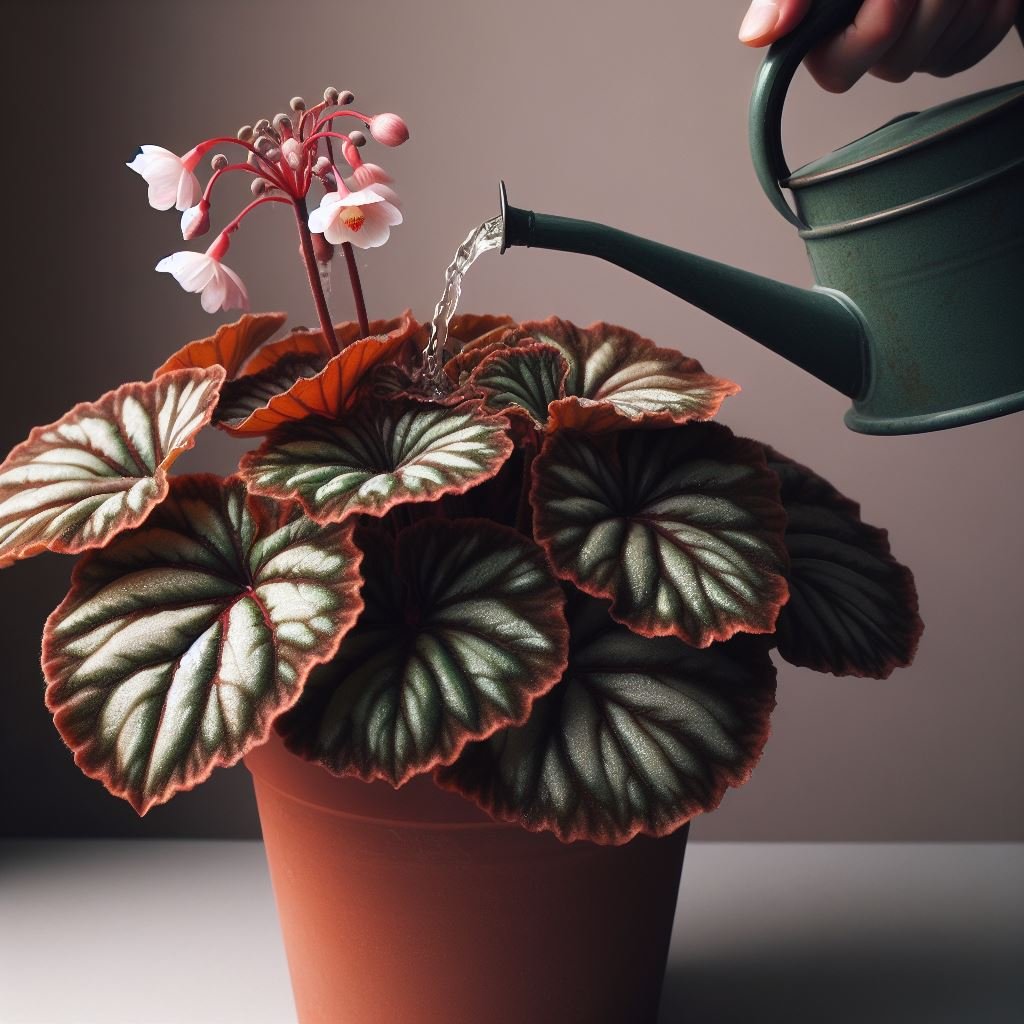
Watering Guidelines
Maintaining the right balance of moisture is crucial for Begonia chloroneura. The plant prefers consistently moist soil but should not be subjected to waterlogged conditions. Here are some watering guidelines to ensure optimal care:
- Consistency: Water Begonia chloroneura regularly to keep the soil consistently moist.
- Avoid Waterlogging: Allow the top inch of soil to dry between waterings to prevent waterlogging and root rot.
- Water Quality: Use room temperature water to avoid shocking the plant.
- Underwatering Warning: Watch for signs of wilting, as this may indicate underwatering.
- Morning Watering: Water in the morning to allow excess moisture on leaves to evaporate during the day.
Signs of Overwatering and Underwatering
- Overwatering: Yellowing leaves, mushy stems, and a foul odor from the soil.
- Underwatering: Wilting, dry and crispy leaves, and a general lack of vitality.
Adjusting Watering Frequency
The frequency of watering may vary based on factors such as temperature, humidity, and the size of the container. During hot and dry periods, or in smaller pots, more frequent watering may be necessary. Conversely, reduce watering during cooler and more humid conditions.
Begonia Chloroneura Humidity and Temperature
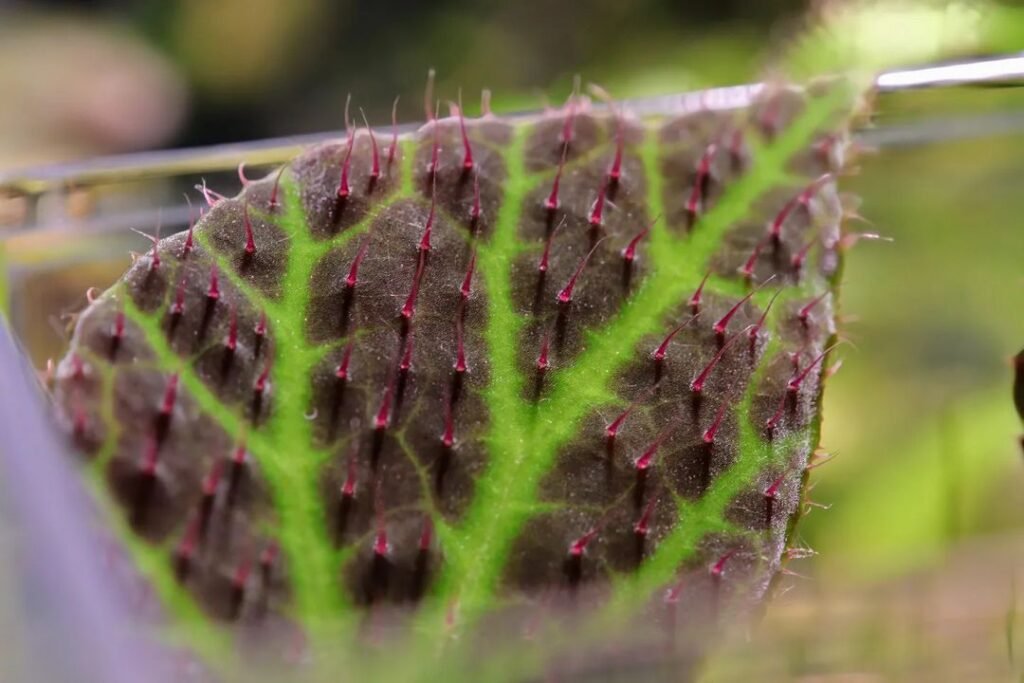
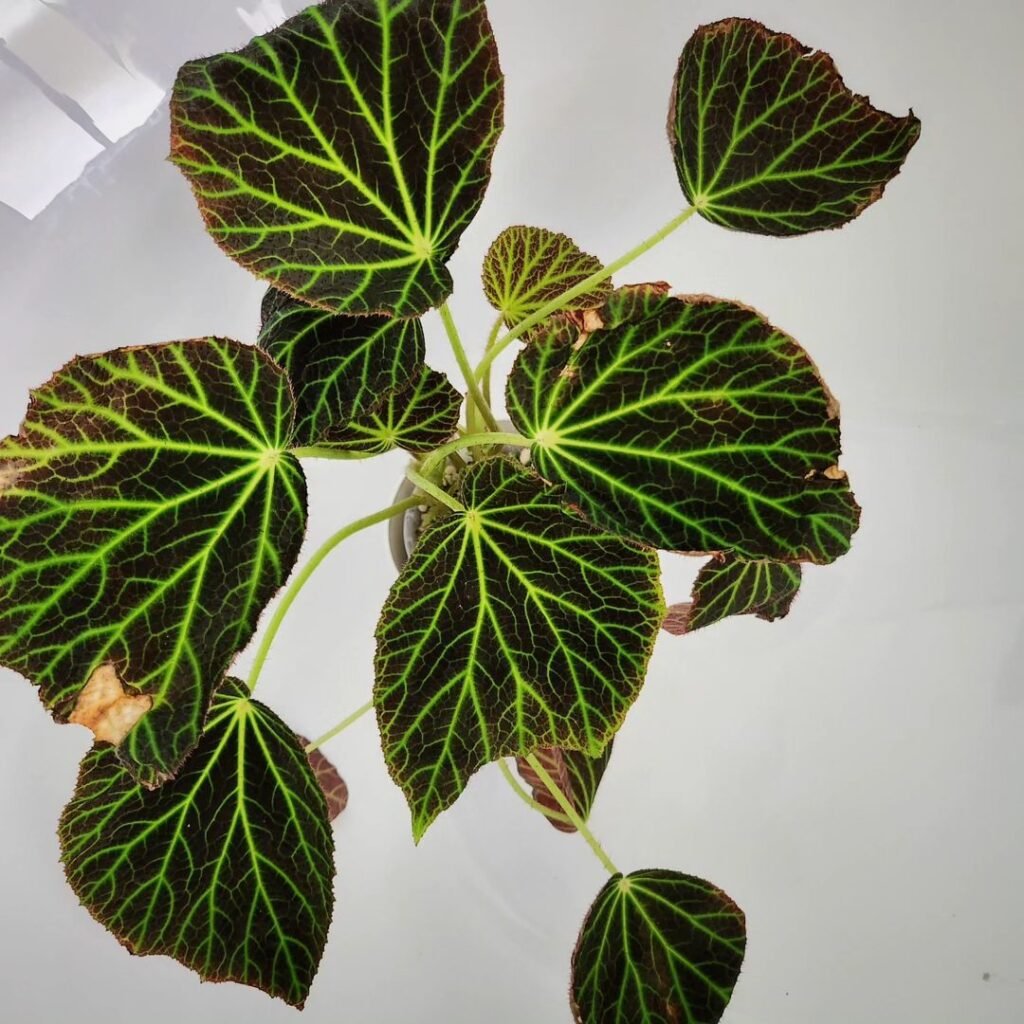
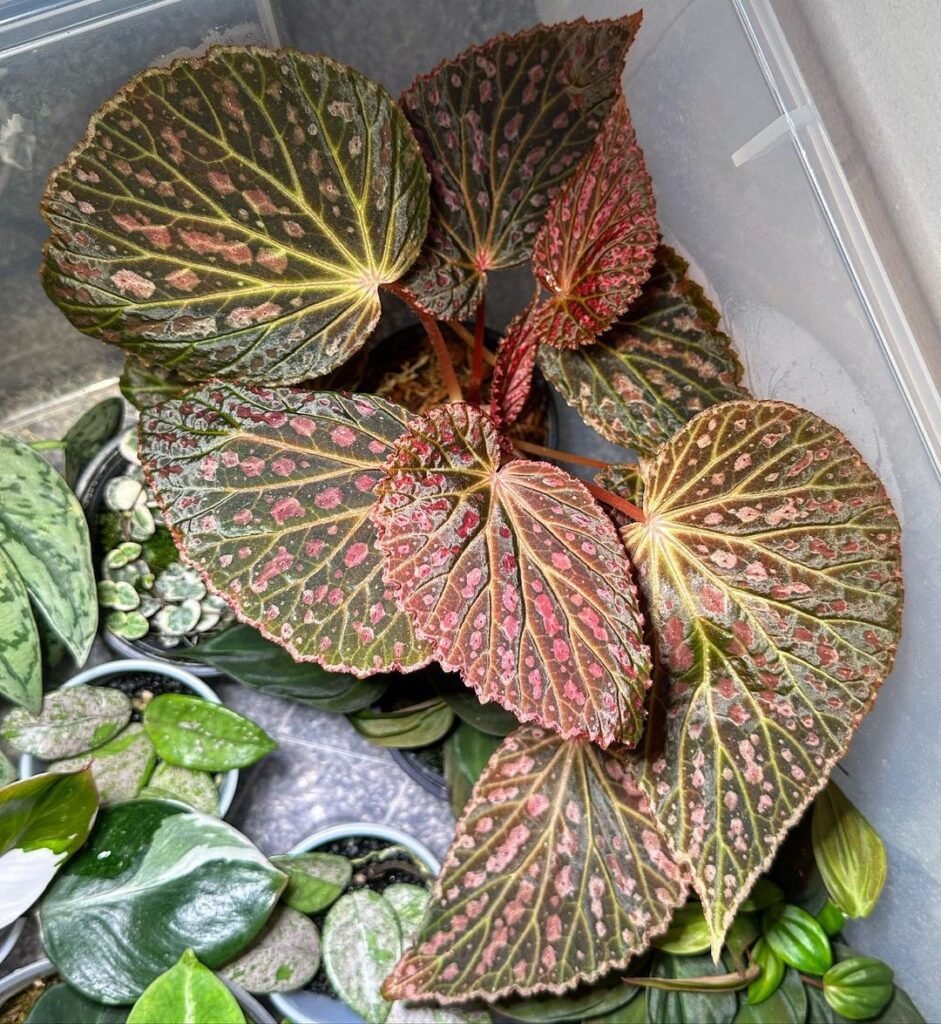
Humidity Preferences
Begonia chloroneura, originating from tropical climates, thrives in high humidity environments. Maintaining adequate humidity levels is essential for the plant’s well-being. Indoors, consider placing the begonia near a humidifier or regularly misting its leaves to recreate the moisture-rich conditions it enjoys in its native habitat. Outdoors, planting in a shaded area or providing a humidity-boosting mulch can contribute to an environment conducive to the plant’s growth.
Temperature Range
The Green-Nerved Begonia flourishes in warm temperatures, ideally between 65-75°F (18-24°C). This temperature range mimics the conditions of its native tropical habitat. Protect the plant from sudden temperature fluctuations, drafts, or cold drafts, as it is sensitive to temperature extremes. If cultivating Begonia chloroneura indoors, avoid placing it near doors, windows, or vents that may expose it to chilly drafts.
Table: Humidity and Temperature Guidelines
| Aspect | Ideal Range | Tips and Tricks |
|---|---|---|
| Humidity | High humidity is preferred | – Place a humidifier near the plant. – Regularly mist the leaves. – Use a humidity tray filled with water and pebbles. |
| Temperature | 65-75°F (18-24°C) | – Keep the plant away from cold drafts. – Avoid sudden temperature fluctuations. – Provide consistent warmth. |
Care Tip: For optimal growth, maintain a consistent humidity level around your Begonia chloroneura, especially during dry periods. A humid environment promotes healthy foliage and overall plant vitality.
Fertilizing Begonia Chloroneura
Fertilizer Selection
Fertilizing Begonia chloroneura is a crucial aspect of its care routine. Choosing a balanced liquid fertilizer with equal ratios of nitrogen, phosphorus, and potassium supports the plant’s overall health and encourages robust growth. Apply the fertilizer during the growing season, typically every 2-4 weeks, to provide the necessary nutrients for optimal development.
Application Guidelines
When applying fertilizer, dilute it to half or quarter strength to avoid overfeeding, which can lead to fertilizer burn. Water the plant before fertilizing to prevent root damage. Ensure the soil is moist, and apply the fertilizer evenly around the plant, avoiding direct contact with the leaves to prevent potential burn.
Table: Fertilizing Guidelines
| Aspect | Recommendations |
|---|---|
| Fertilizer Type | Balanced liquid fertilizer with equal N-P-K ratios |
| Frequency | Every 2-4 weeks during the growing season |
| Dilution | Dilute to half or quarter strength to prevent overfeeding |
| Application Time | Apply to moist soil; water the plant before fertilizing |
| Avoiding Leaves | Ensure the fertilizer does not come into direct contact with the leaves |
Care Tip: When fertilizing, prioritize balanced nutrients for Begonia chloroneura to maintain its overall health and vibrancy. Diluting the fertilizer and avoiding direct contact with leaves during application prevents potential harm to the plant.
Begonia Chloroneura Pruning and Shaping
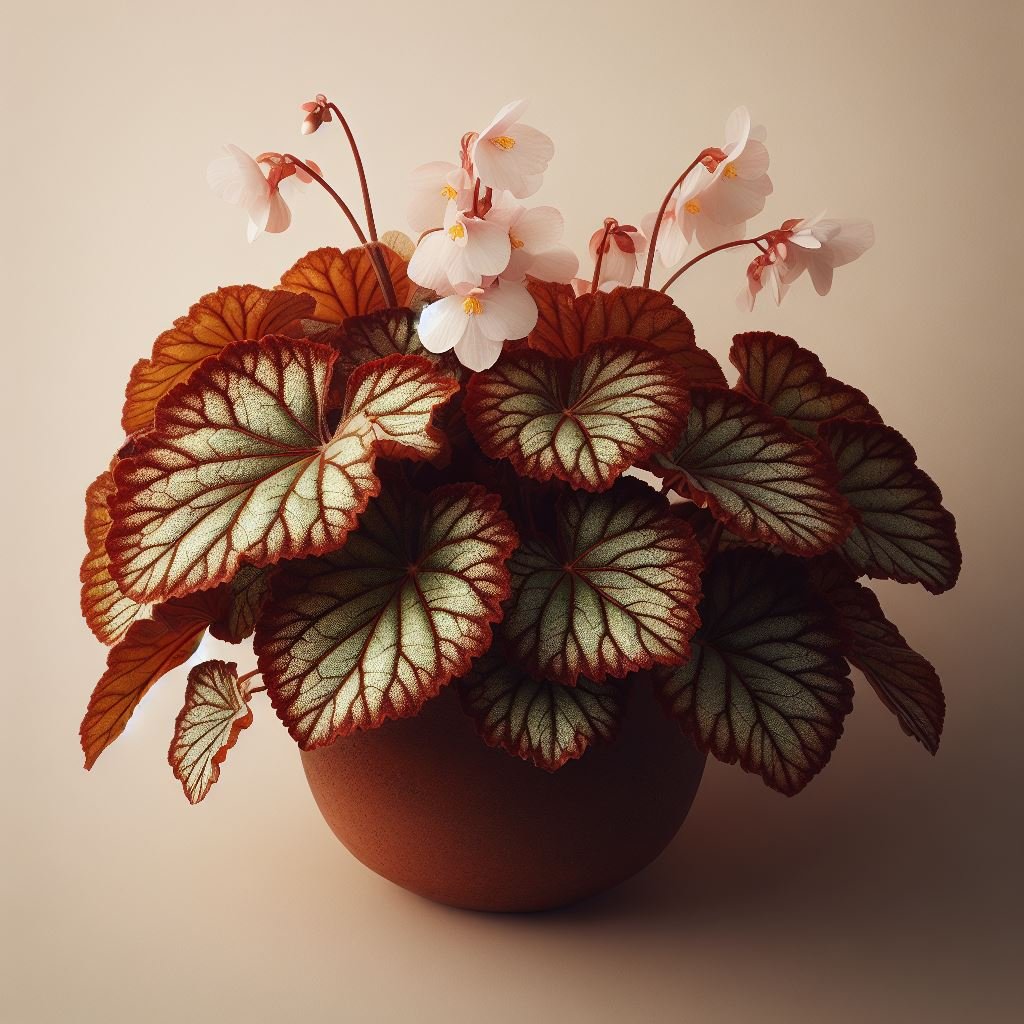
Pruning for Shape and Size
Pruning Begonia chloroneura is essential to maintain a compact and attractive shape. Regular pruning of leggy or overly long stems helps encourage bushier growth and prevents the plant from becoming too sparse. Use sharp, clean pruning shears to make precise cuts, and remove any damaged or yellowing leaves to promote a tidy appearance.
Shaping Techniques
To enhance the aesthetic appeal, consider shaping your Begonia chloroneura. Pinching back the tips of young stems can stimulate lateral growth, creating a fuller and more robust plant. Experiment with different shaping techniques, such as selective pruning or pinching, to achieve the desired form while promoting a balanced and visually pleasing appearance.
Table: Pruning and Shaping Tips
| Aspect | Tips and Techniques |
|---|---|
| Pruning Frequency | Regularly prune leggy or long stems for bushier growth |
| Tool Maintenance | Use sharp and clean pruning shears for precise cuts |
| Damaged Leaves Removal | Remove damaged or yellowing leaves to maintain a tidy appearance |
| Shaping Strategies | Pinch back tips for lateral growth; experiment with shaping techniques |
Care Tip: Incorporate regular pruning into your care routine for Begonia chloroneura to encourage bushier growth and maintain an attractive, well-shaped appearance. Be mindful of using clean, sharp pruning shears for precise cuts.
Begonia Chloroneura Propagation and Repotting
Propagation Methods
Propagating Begonia chloroneura allows you to expand your collection or share the joy of this unique plant with fellow enthusiasts. The most common method of propagation is through stem cuttings. Select a healthy stem, ideally with a few leaves, and make a clean cut just below a leaf node. Remove any leaves near the cut end, dip it in rooting hormone, and plant it in a well-draining rooting medium. Keep the cutting in a warm and humid environment until roots develop, usually in a few weeks.
Care Tip: When propagating Begonia chloroneura, ensure the cutting receives indirect light and maintain consistent humidity to support successful root development.
Begonia Chloroneura Seasonal Care
Seasonal Considerations
Adapting your care routine to the changing seasons is crucial for the well-being of Begonia chloroneura. During the growing season, which typically spans spring and summer, provide ample light and warmth to encourage vigorous growth. As fall approaches, gradually reduce watering frequency and fertilization, preparing the plant for a period of dormancy. In winter, when growth slows, limit watering further and protect the plant from cold drafts.
Care Tip: Monitor the changing seasons and adjust your care routine accordingly, providing season-specific conditions to ensure the long-term health of Begonia chloroneura.
Begonia Chloroneura Companion Plants
Choosing Companions
Selecting suitable companion plants for Begonia chloroneura enhances the visual appeal of your garden and creates a harmonious environment. Opt for shade-loving companions that share similar care requirements. Plants like ferns, hostas, and other begonia varieties can complement the aesthetic qualities of Begonia chloroneura. Ensure that the companions have compatible light, soil, and moisture preferences to promote a thriving and cohesive garden.
If you’re thinking of extending your begonia plant family, read up on begonia rhizomatous care and begonia dregei care to help you decide on the next addition to your squad.
Care Tip: When choosing companion plants, consider the specific needs of Begonia chloroneura and select plants with compatible care requirements to create a balanced and visually appealing garden space.
Pest Control Tips for Begonia Chloroneura
Begonia chloroneura, like many plants, is susceptible to pests that can impact its health and appearance. Regular inspection of the leaves and stems is essential to identify any signs of pests early on. Common pests that may affect Begonia chloroneura include aphids, spider mites, and mealybugs.
To control these pests, use insecticidal soap or neem oil. Ensure thorough coverage of the foliage, especially the undersides of leaves where pests often hide. Repeat applications as needed, and consider introducing beneficial insects like ladybugs to help keep pest populations in check.
Care Tip: Incorporate preventative measures, such as regularly cleaning the foliage and inspecting your plant, to catch potential pest issues early and maintain the overall health of Begonia chloroneura.
Reviving a Sick or Wilting Begonia Chloroneura
A sick or wilting Begonia chloroneura can be a cause for concern, but with prompt action, you can often revive the plant.
First, identify the cause of the issue—whether it’s overwatering, underwatering, or a pest infestation. Adjust the care routine accordingly, addressing the specific problem. Trim away any diseased or dead foliage using clean, sharp pruning shears.
Repot the plant if root rot is suspected, using fresh, well-draining soil. Place the plant in an environment with optimal light and humidity for recovery.
Care Tip: When reviving a sick Begonia chloroneura, focus on the root health, adjusting watering practices and repotting if necessary. Providing a stress-free environment with appropriate light and humidity aids in the plant’s recovery.
Conclusion
In conclusion, cultivating Begonia chloroneura is a rewarding experience for any plant enthusiast. Its unique foliage and manageable care requirements make it a versatile addition to both indoor and outdoor spaces. By understanding the plant’s preferences for light, soil, and humidity, as well as implementing proper care techniques such as pruning and fertilizing, you can enjoy a thriving and visually stunning Green-Nerved Begonia.
FAQs
Is Begonia Chloroneura suitable for beginners?
Begonia chloroneura can be suitable for beginners, especially those who are willing to invest time in understanding its specific care requirements. While it may have some nuances, providing the right conditions regarding light, soil, and humidity can lead to a successful and rewarding cultivation experience.
Can Begonia Chloroneura tolerate direct sunlight?
Begonia chloroneura prefers filtered or indirect sunlight and may not tolerate prolonged exposure to harsh, direct sunlight. It’s advisable to provide it with a location that mimics its native tropical environment, such as a bright, shaded area.
How often should I fertilize Begonia Chloroneura?
Fertilize Begonia chloroneura every 2-4 weeks during the growing season with a balanced liquid fertilizer. Dilute the fertilizer to half or quarter strength to prevent overfeeding, and apply it to moist soil.
Can Begonia Chloroneura survive in low humidity?
While Begonia chloroneura prefers high humidity, it can tolerate lower humidity levels. To create a more favorable environment, consider misting the leaves regularly or placing a humidifier nearby, especially in dry conditions.

Writer/Green Thumb/Explorer – Rooted deep in the rich soils of Devon, I’ve cultivated a vast expertise in plant care, helping greenery thrive in homes across the UK. When I’m not crafting detailed plant care guides, I’m journeying through the lush landscapes of the West Country, unearthing nature’s secrets and sharing them with fellow plant enthusiasts. Every leaf has a story, and I’m here to tell it.





